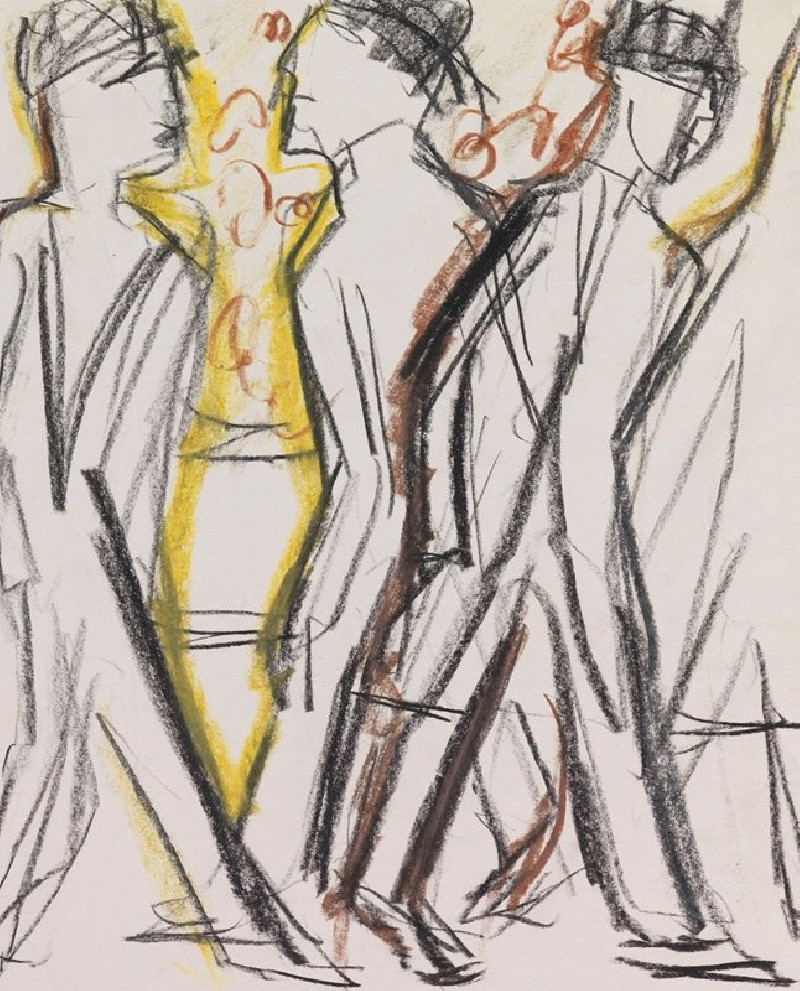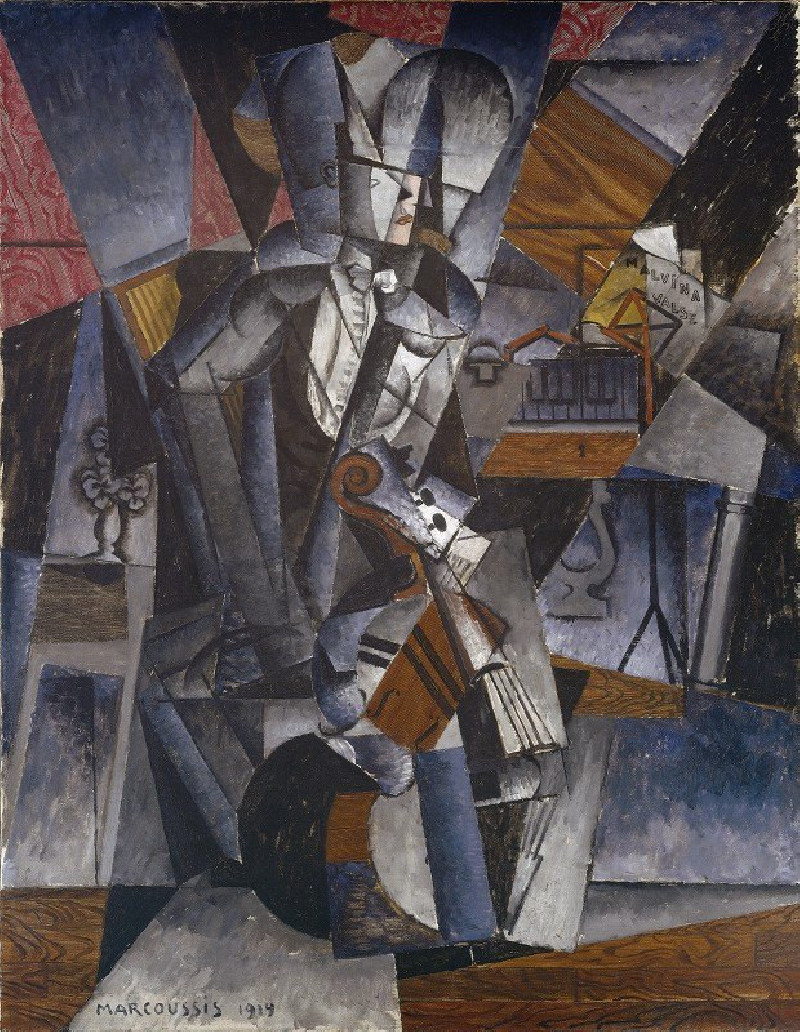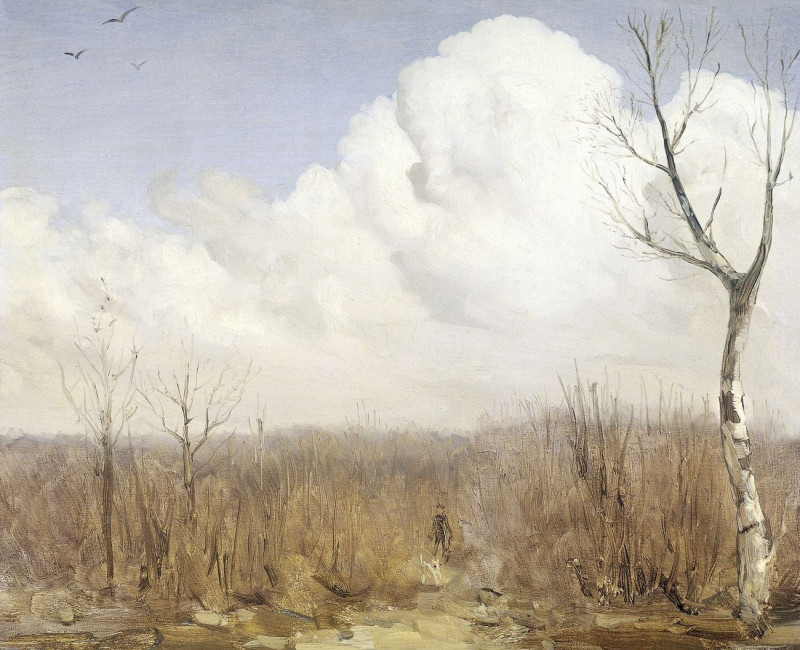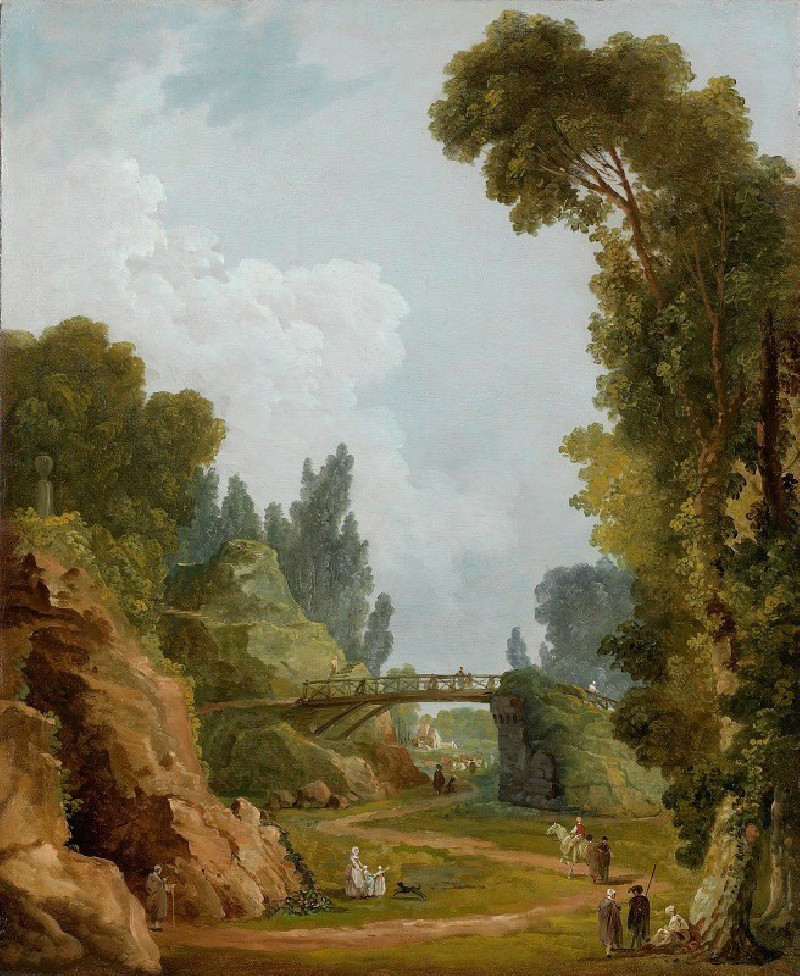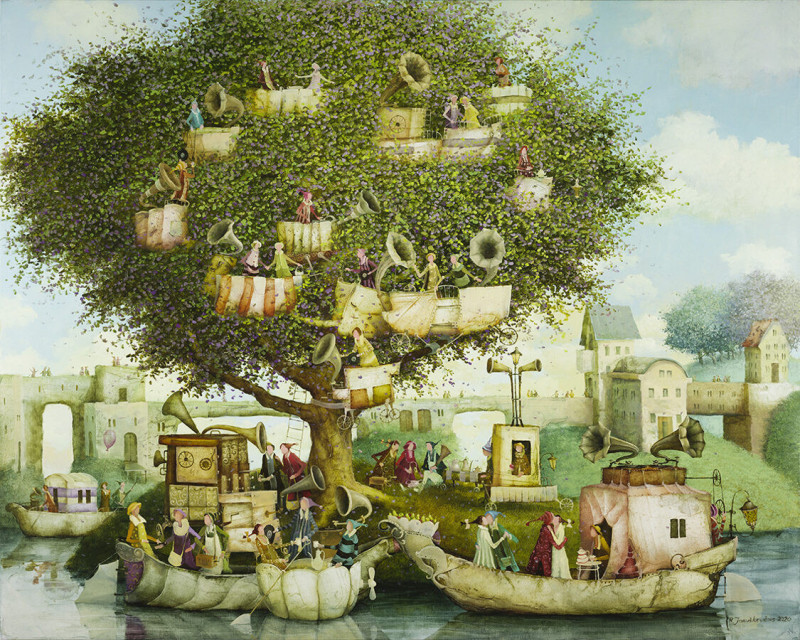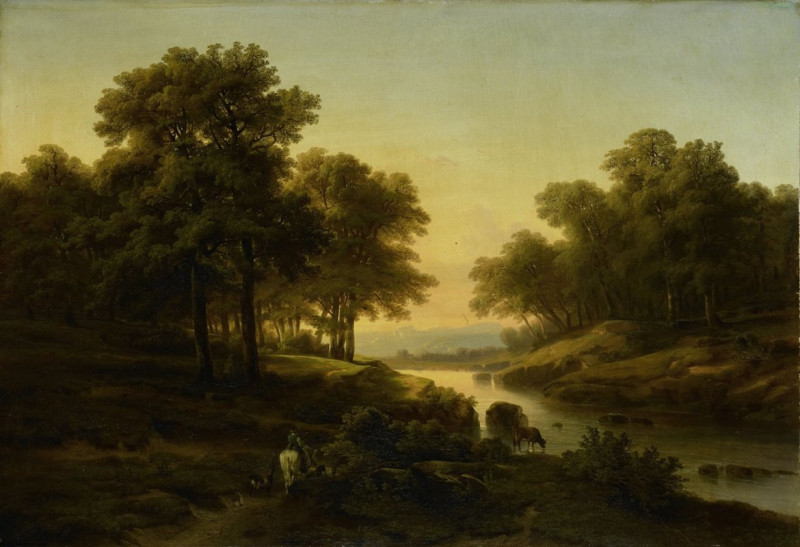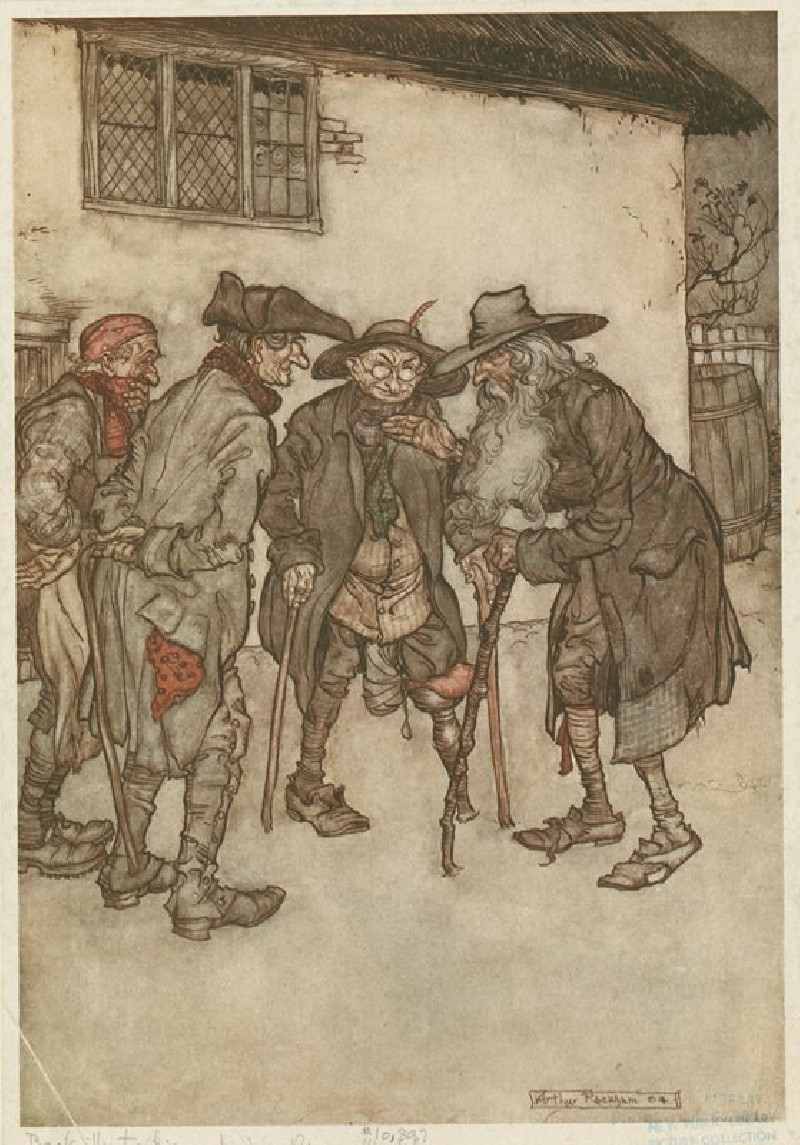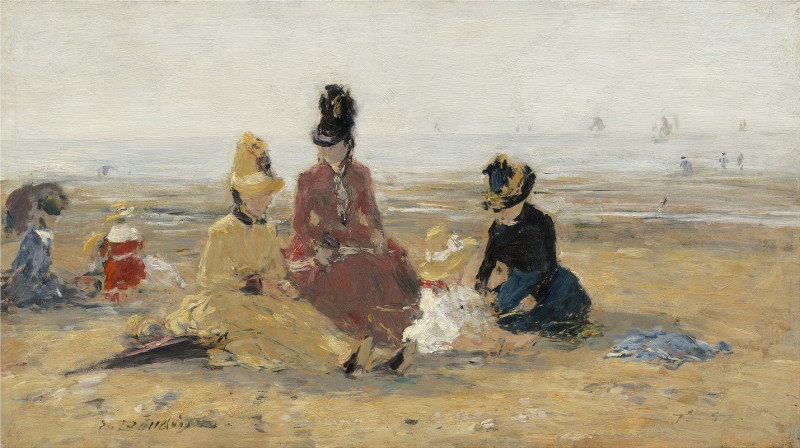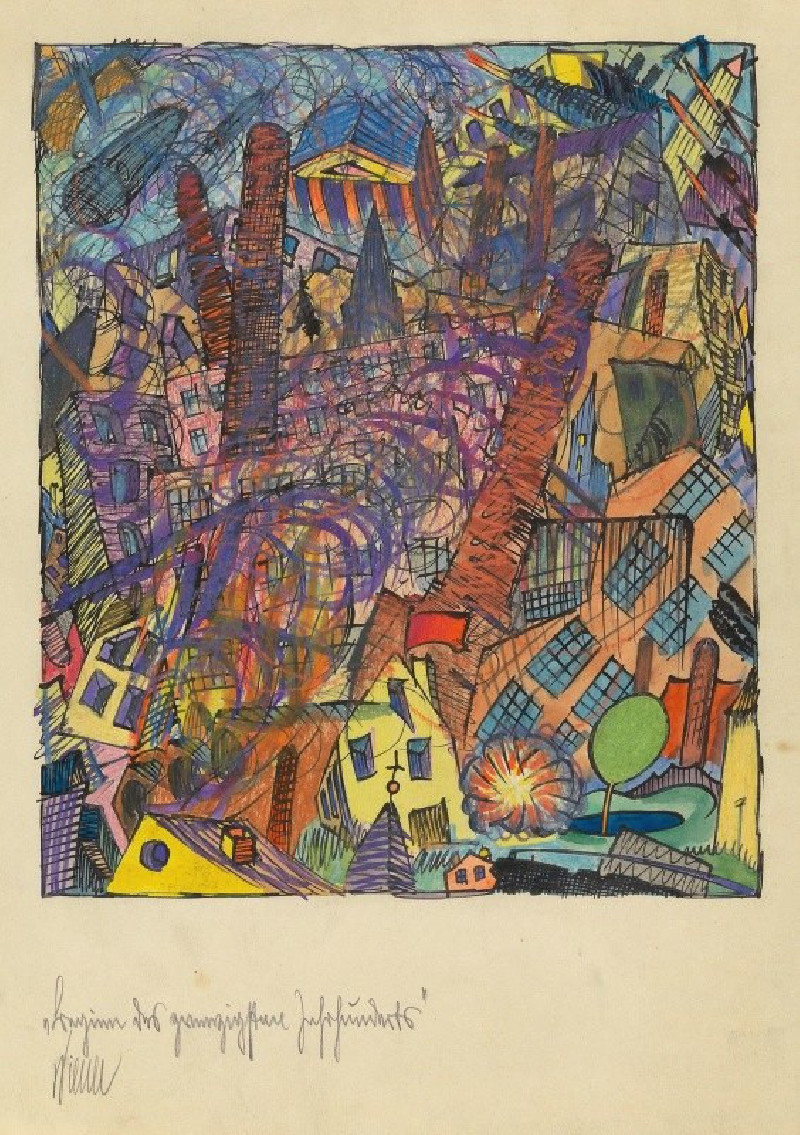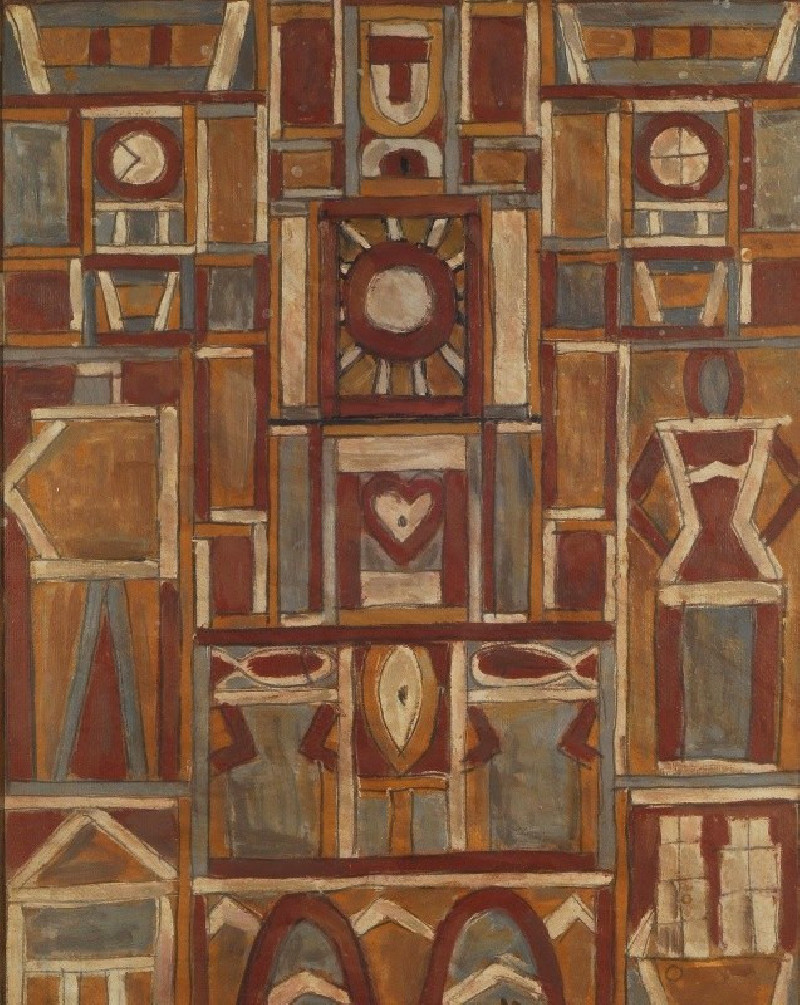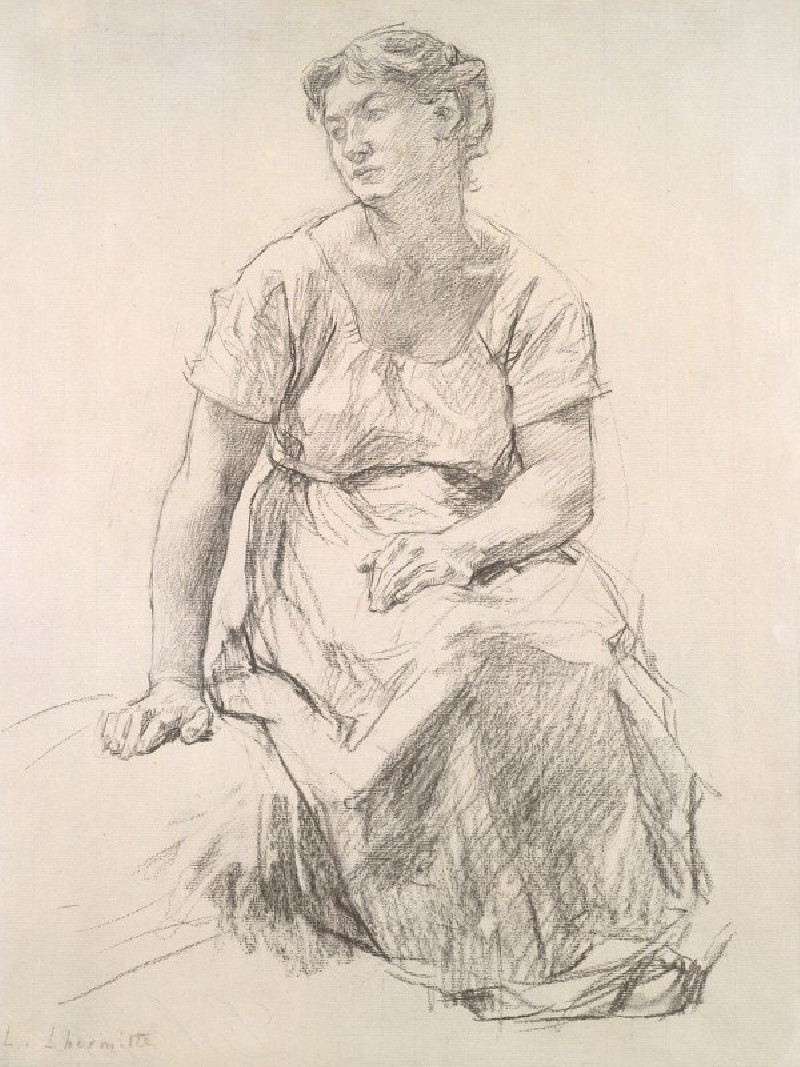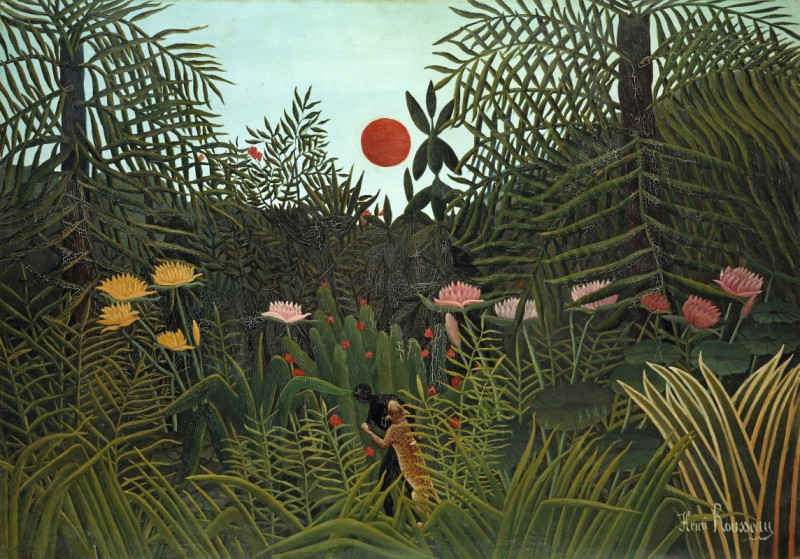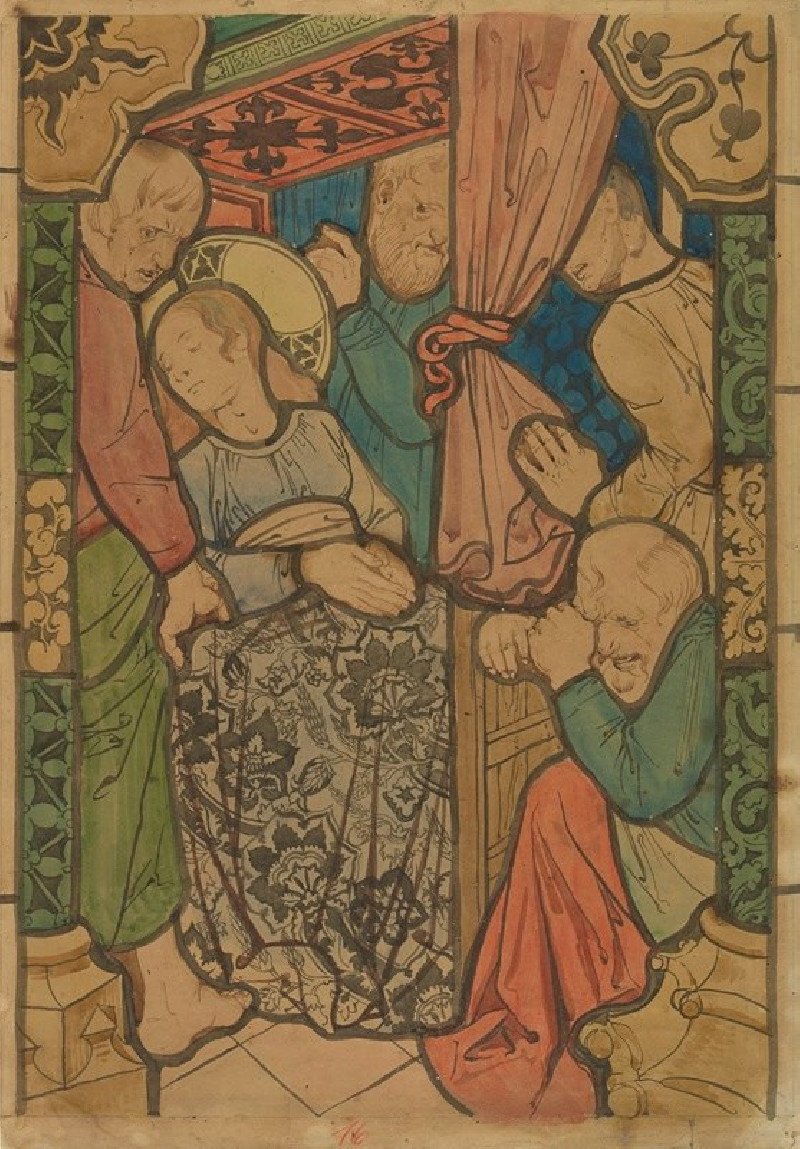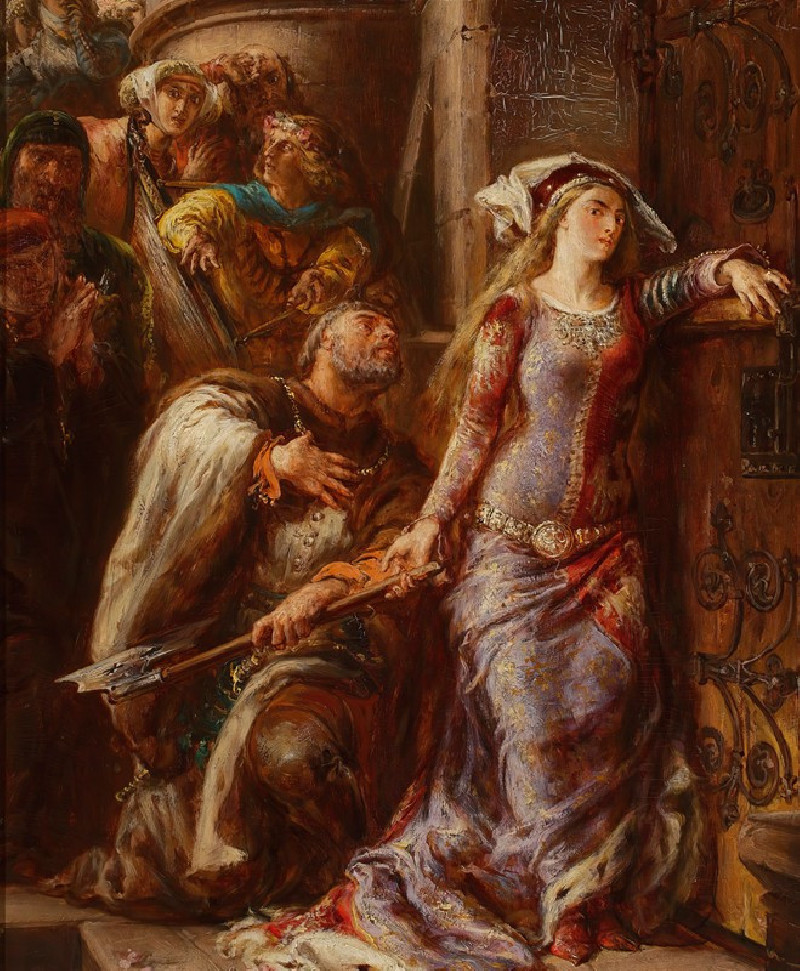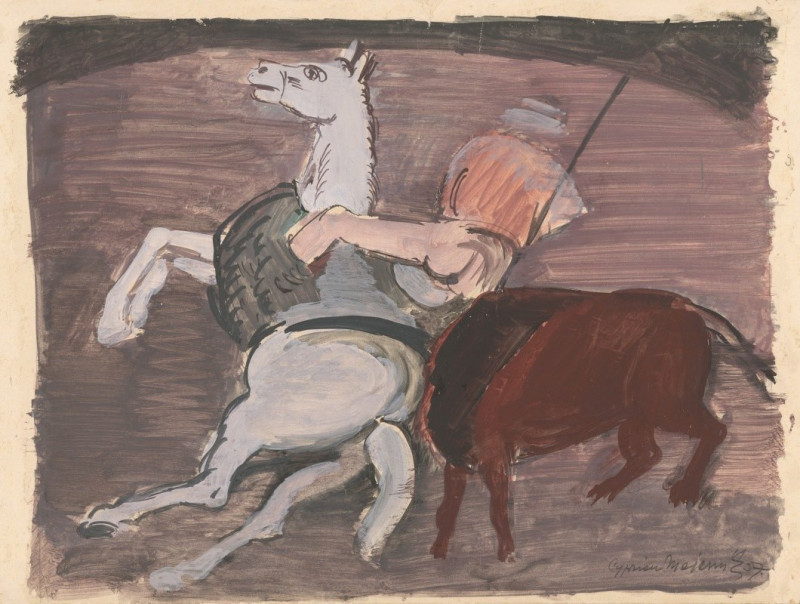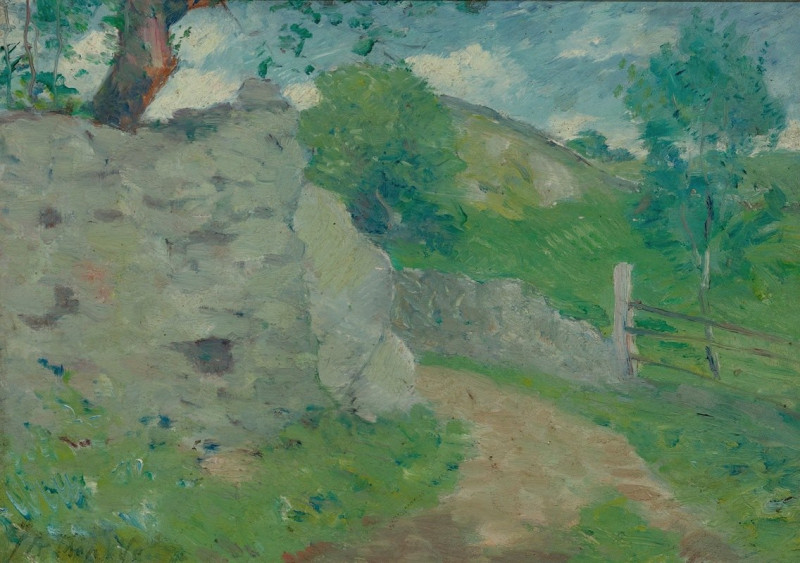Passanten auf der Straße (1926)
Technique: Giclée quality print
Recommended by our customers
More about this artwork
"Passanten auf der Straße" (1926) by Ernst Ludwig Kirchner is a vibrant example of Expressionist art, capturing the dynamic rhythm of city life through bold strokes and abstract forms. This painting depicts a group of pedestrians, rendered in a style that emphasizes mood and expression over realistic depiction.The figures are elongated and fragmented, with swift, rough strokes of black outlining their forms. Splashes of color—yellows and reddish tones—accentuate the figures, giving a glimpse into the transient nature of urban movement and the fleeting intersections of city dwellers. Kirchner's use of distortion and abstract shapes conveys the emotional experience of modern urban life, characterized by a sense of rushing and fragmentation.This artwork invites viewers to feel the pace and pulse of a city street, reflecting the alienation and anonymity that often accompany the urban experience.
Delivery
Returns
Ernst Ludwig Kirchner (1880–1938) was one of the most important German Expressionist painters. He was a co-founder of Die Brücke, a group of German expressionist artists formed in Dresden in 1905. Die Brücke and Kirchner took inspiration from Vincent Van Gogh and Edvard Munch, as well as African and Oceanic art. They used woodblock printing as a medium to showcase their signature style: flat, unrealistic images with vivid colors. The recurring themes in Kirchner's artworks included exotic cultures, faraway landscapes, self-portraits, dancers and Berlin street life. His paintings and prints effectively portrayed non-European cultures despite the fact that he never traveled outside of Europe.

